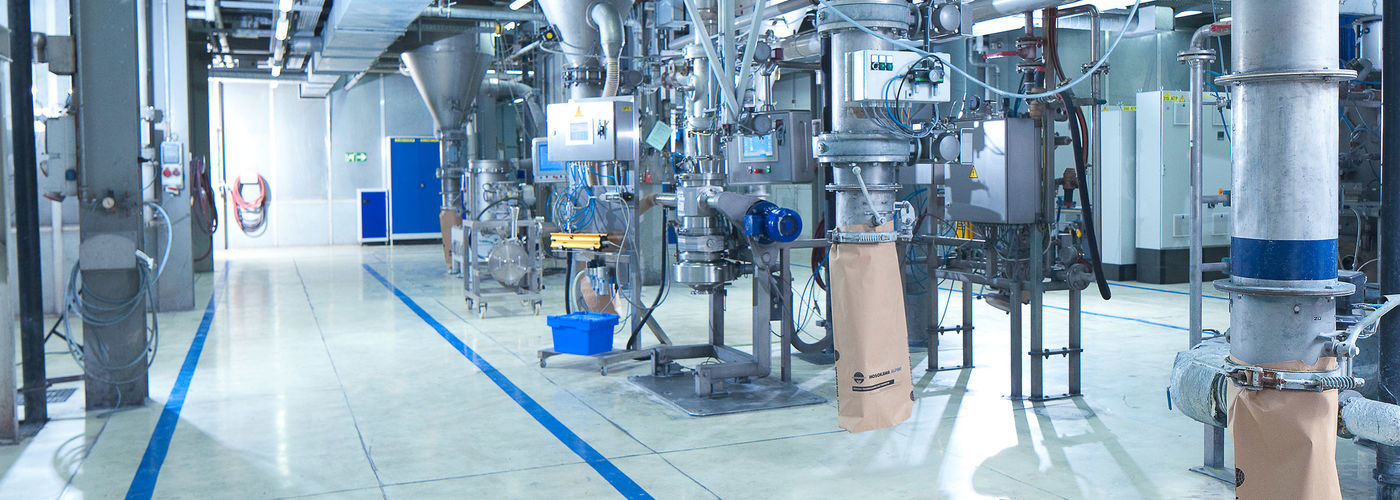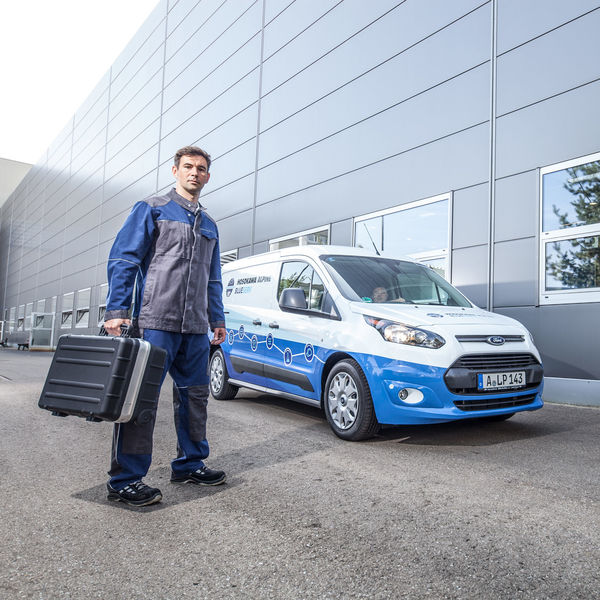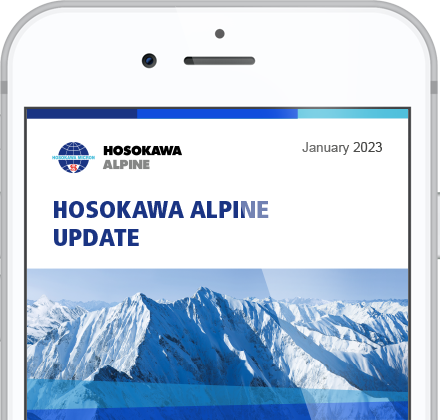Table roller mills operate in accordance with the principle of pressure comminution, making them suitable for brittle but elastic feed products. The product is subjected to compressive stress between the grinding table and the grinding rollers. The specific grinding force (contact force divided by the cross-sectional area of the grinding roller) is in the range between approx. 0.5 and 1 N/mm², whereby the effective pressures in the material bed are naturally much higher. The grinding table is set into rotation by a motor and suitable gear unit, peripheral speeds of between 2 and 6 m/s are used. Because the gear unit has to absorb the forces of the grinding rollers, it is equipped with an axial friction bearing (segmented bearing).
The product is fed to the centre of the grinding table where centrifugal force conveys it across the grinding table to the periphery. The grinding rollers roll over the product repeatedly during this time and crush it. The grinding rollers are pressed hydraulically against the grinding table, where the fluctuations that occur in operation are buffered by the hydraulic gas accumulator charged with compressed air. The grinding table is equipped with a weir at its edge; the height of the weir can be chosen to set the residence time of the product in the grinding zone. A nozzle ring is located around the grinding table from which the incoming air exits at high speed. The comminuted product is conveyed upwards to the integrated air classifier; the rejected coarse material is returned to the grinding table for further comminution. The end product is separated from the air in a downstream collection unit.





